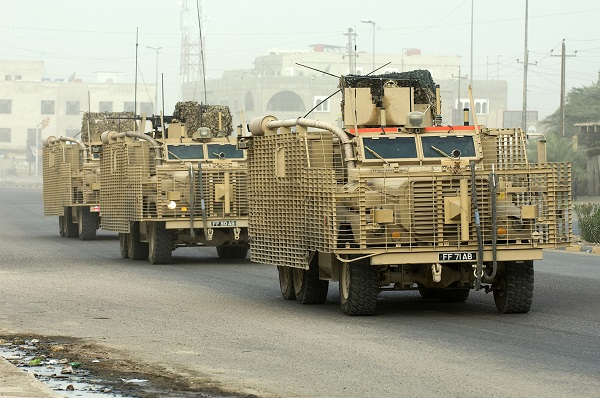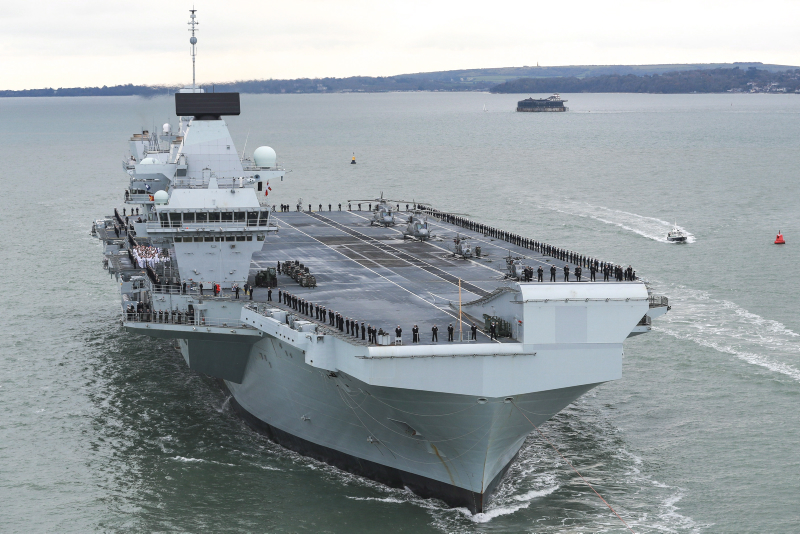This is the second in a series of posts that consider prioritisation within UK Defence. The first post examined Defence’s approach to prioritisation in general. This post explores priorities in defence reviews and SDSRs. Future posts will propose a simple set of priorities to guide the Defence input to the Integrated Review and what that might mean for capabilities within the maritime, land and air domains.
Prior to 2010, UK defence reviews focused solely on the roles and responsibilities of the armed forces. Yet, even though most of the Cold War reviews outlined missions for defence, as Claire Taylor identified in her House of Commons guide to previous British defence reviews, they did not prioritise within those missions. For example, in its 1975 review, the Labour government “decided to concentrate British effort” on the following:
– NATO’s Central Region.
– The Eastern Atlantic and Channel Areas.
– The security of the UK and its immediate approaches.
– The NATO nuclear deterrent.
However, all four missions were treated equally within the review. This lack of prioritisation allowed the single services successfully to argue for an equitable division of the defence budget – an outcome they fought extremely hard to protect. Even in times of continuous contraction and decline, which many commentators believe to be an apt description of the trajectory of post-World War II defence policy, maintaining an equal share of the financial pie was considered by the military to be paramount. This situation was accurately, if rather pessimistically, summed up by Mr Brynmor John, the Labour shadow defence minister during the early 1980s, who said: “The whole history of defence planning has been equality of misery – every Service has taken its proportionate share of cuts.”
Prioritisation in the 1981 Nott Review
But in 1981, the situation changed. In his defence review, Conservative Secretary of State for Defence John Nott retained the four military tasks articulated in the 1975 review; however, he elected to resource them in the following priority order:
– An independent element of strategic and theatre nuclear forces committed to NATO.
– The direct defence of the UK homeland.
– A major land and air contribution on the European mainland.
– A major maritime effort in the Eastern Atlantic and the Channel.
The result was that the Trident programme (the replacement for Polaris, the UK’s existing independent nuclear deterrent) was protected, all of the major improvement plans for UK air defence continued as planned, and the British Army on the Rhine manpower was maintained at 55,000. However, as Andrew Dorman, Professor of International Security at King’s College London, pointed out, to balance the books, the RN’s share of the defence budget had to be reduced from twenty-nine per cent to twenty-five per cent, despite the fact that it had to accommodate Trident, and an additional £7.6 billion was removed from the maritime element of the equipment plan. For the RN, the consequences of these decisions were substantial cutbacks throughout the fleet (for example, the number of destroyers and frigates was expected to reduce from the mid-60s to the low-30s) and manpower savings of between one quarter and one third.
Less than a year after the 1981 defence review, the Falklands Conflict occurred, which caused a major re-visiting of Nott’s prioritisation of defence tasks. His attempt to abandon the traditional division of the defence budget between the services and adopt a prioritised functional approach to defence was largely thwarted by a resurgent RN that managed to preserve the overall balance of its fleet, despite the initial radical recasting envisaged by Nott.
Equity in the apportionment of Defence Funding
Significantly, this is the only occasion in the last seventy years when a defence secretary has tried to enforce priorities in defence reviews or SDSRs that cut across the single services’ preference for a uniform apportionment of funding between them. Since the Nott Review, the services have more or less succeeded in securing an equal slice of the defence budget; indeed, a glance at the figures from the 2018 Defence Equipment Plan confirms their ten year funding allocation for equipment out to financial year 2029/28 as: RN – £32,500 billion (17.4%); Army – £30,200 billion (16.2%); RAF – £34,000 billion (18.2%).
Risk Management within Today’s National Security Strategy
Today defence commitments are considered alongside wider national security issues during five-yearly strategic defence and security reviews. More importantly, the resultant National Security Strategy is supported by a risk-based methodology that generates a National Security Risk Assessment (NSRA). However, although this approach includes an element of prioritisation, with risks consigned to one of three tiers, the resultant risk matrix is far too wide ranging. As David Blagden, Senior Lecturer in International Security at the University of Exeter, suggested to the House of Commons Defence Committee: “the NSRA … creates very broad categories so it is hard to think what might not actually fall within these [tier one] categories if we defined it in the right way.”
Conclusion
When considering priorities in defence reviews and SDSRs, if it is possible to argue that practically any scenario could find a home in one of the extant six tier one risks, then virtually any military capability decision is defendable. This almost unlimited freedom of manoeuvre for capability managers may be welcome by the single services, but at the defence level it is extremely unhelpful, as it removes the ability to undertake any inter-environment prioritisation. Without this, there is no guarantee UK Defence will be able to generate and maintain a balanced force that meets the nation’s defence and security needs, now and in the future.






